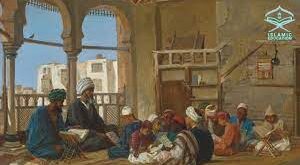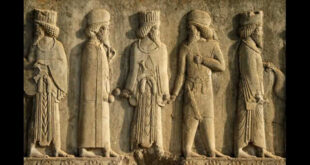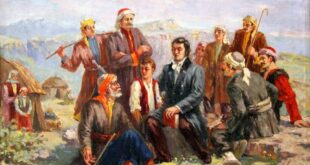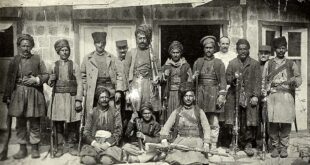 Urartian Kingdom has not only become known by its organized state structure, advanced architecture, irrigation system, superior quality metal workmanship but also has become known by its red burnished potteries, which imitate metallic pots. Potteries’ pastes, which were given shape at paddle wheels by expert potters, were prepared by using very well sieved clay and sometimes by using additive small piece of sand. Slip, which were usually red and tones of red, were applied before drying in the kiln. The other operation that was realized before the stage of drying in the kiln was burnishing. After a good quality drying, possibly by getting polished with a soft material like leather, their surfaces were provides even and smooth and therefore, there was not any difference in the apparition of the metallic pots.
Urartian Kingdom has not only become known by its organized state structure, advanced architecture, irrigation system, superior quality metal workmanship but also has become known by its red burnished potteries, which imitate metallic pots. Potteries’ pastes, which were given shape at paddle wheels by expert potters, were prepared by using very well sieved clay and sometimes by using additive small piece of sand. Slip, which were usually red and tones of red, were applied before drying in the kiln. The other operation that was realized before the stage of drying in the kiln was burnishing. After a good quality drying, possibly by getting polished with a soft material like leather, their surfaces were provides even and smooth and therefore, there was not any difference in the apparition of the metallic pots.
It is known that this pottery was used during whole Urartian history, as well as there was not any pioneer of this pottery, before Urartian Kingdom in the region, and it is known that it was vanished after the collapse of the Kingdom.
The good quality samples of the red burnished Urartian pottery that was encountered in similar forms and producing techniques and was used intensely for a long period of time in the large area that was spread by Urartian Kingdom, found among the samples, which are subject to the article, and found in the Museum of Diyarbakır, where they had reached there through the purchase that were done with Van Region.
The total of 14 vessels that are introduced, have different shapes and they are typically an Urartian manufatures. Forms are composed from Bowls (Pl. Ia-b; IIa), Plate (Pl.IIb), Stemmed Goblets (Pl. IIIa-b), Trefoil Jugs (Pl. IVa-b; Va), Single Handled Cup (Pl. Vb), Jars (Pl. VIa-b; VIIa) and Small Jar (Pl.VIIb).
Fourteen Urartian pots that are included in this work, although their exact places, statuses and dates are unknown, enrich other red burnished potteries came into light until now and even contribute to rarely known form.
 History of Kurdistan
History of Kurdistan



